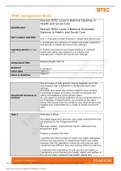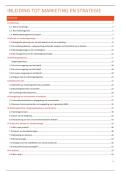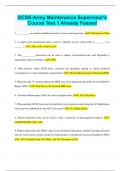Summary
Summary Financial Analysis and Investor Behavior (323039) Answers to "sample exam questions"
- Course
- Institution
Summary of the slides (with extensive notes) of the course Financial Analysis and Investor Behavior (Master Finance Tilburg University). Professor Lieven Baele has provided some sample exam questions. I answered all of them with the help of the slides, my own notes, research papers and other intern...
[Show more]







